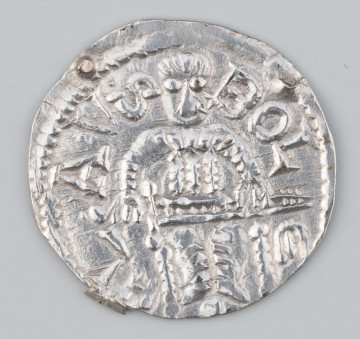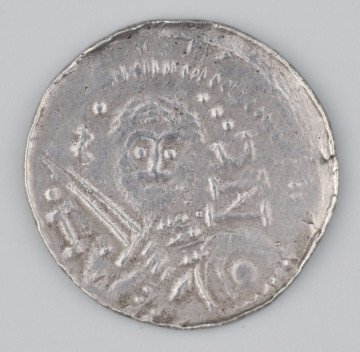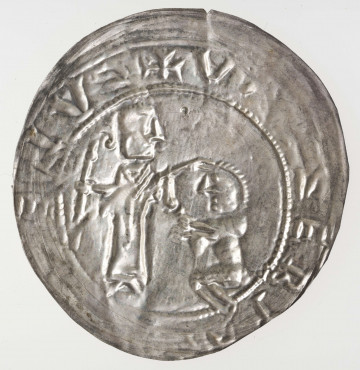
Denarius of Bolesław the Curly
1146 — 1152
National Museum in Lublin
Part of the collection: Lubliniana. Painting views of Lublin and the Lublin Region (17th–early 20th c.)
The Resurrection of Poland is a popular motif in Polish art of the early 20th century, repeatedly taken up by Władysław Barwicki. The presented print is distinguishable from the artist's earlier works by its careful composition, thoughtful selection of figures, and clear juxtaposition of national symbols. Its creation was influenced by Barwicki's patriotic attitude, who dreamed of a free homeland and, like many artists, felt obliged to take up the subject of regaining independence.
The print, created in Lublin, is a part of a series of representations of the Polish community, especially the current which was formed in the post-partition period and during the partitions. Polonia, portrayed as a young woman with the features of Queen Jadwiga, goes through the crucifixion, the grave, to finally, like Christ, rise from the dead. The scenes are accompanied by national symbols: an eagle, a banner, insignia of power, signs of bondage: chains, black birds as invading powers, as well as references to religion in the form of images, mainly of Our Lady of Częstochowa. Images of this type depict the situation of the state and the mood of society. The demand for patriotic art at that time is evidenced by a painting and sculpture competition under the motto "Polonia" announced by "Zachęta" in 1916. Legion art was also exhibited in Kraków (1916), Warsaw and Lublin (1917).
Author / creator
Dimensions
cały obiekt: height: 48 cm, width: 64 cm
Object type
graphics
Technique
lithography
Material
paper
Creation time / dating
Creation / finding place
Owner
The National Museum in Lublin
Identification number
Location / status

1146 — 1152
National Museum in Lublin

1140 — 1143
National Museum in Lublin

1135
National Museum in Lublin
DISCOVER this TOPIC
Museum of King Jan III's Palace at Wilanów
DISCOVER this PATH
Educational path